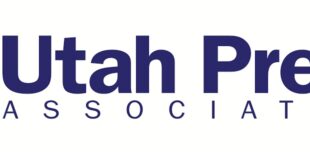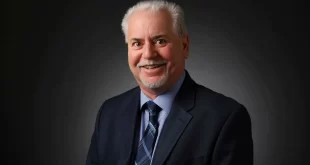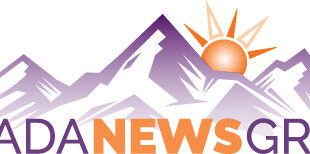This history was compiled for the 1983 Nevada Press Bulletin.
Ancient Indian tribes and the Nevada State Press Association had something in common.The tribes did not leave a written language, so tribal lore was passed down from generation to generation. Much of he lore was lost, some of it was twisted; as the tribal elders grew old, their memories failed, and they eventually, as must all men, ascended to the great hunting ground in the sky.
The Nevada State Press Association of itself has followed the trail of the tribes, failing to leave a written language. Oh, yes, there are bits and pieces, scattered here and there, in the gorges and files of member newspapers, or dusty-covered cases and boxes, but there are few real records.
This history, prepared for our annual convention edition, must not be regarded as just plain history. Too many liberties must be taken in this off-the-top-of-the-head elegy.
Earlier efforts to compile a history of the NSPA had been only partially successful. In 1976 a student in the University of Nevada Journalism department prepared a history with the disclaimer by the then-editor of the bulletin that no complete records of history of the NSPA exist.
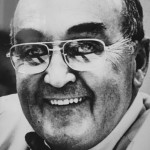
That history was incomplete and contained a number of discrepancies. Another history prepared at the request of William V. Wright of the Las Vegas Review-Journal when Wright was NSPA president (1964-65) sheds more light on NSPA origins.
The Wright report, published in the NSPA Bulletin in 1965, shows eight editors and publishers from Elko, Tonopah, Austin and Fallon held a meeting in Austin Aug. 10, 1924 to talk about forming an association of Nevada’s newspapers and newspapermen. Their names aren’t listed, but probably among them were Doug Tandy of the Reese River Reveille, Claude Smith of the Fallon Standard, Allen K. Dalbey, Fallon Eagle, Harold P. Hale of Elko, Scoop Connors and Matt Farrell, Tonopah.
At least three attempts had been made in earlier years to form a press association. The eight gathered in Austin that August day 59 years ago noted that the earlier associations had failed because members fell to bickering. The new association would operate on a friendlier basis, its laudable aim being the advancement of the newspaper and printing business and profession, and the welfare of the members. In this effort they decided to seek help and advice from Prof. Alfred Leslie Higginbotham, who taught journalism with the English department of the University of Nevada. Tandy and Smith were named organizers for the first general meeting of Nevada publishers and job shop owners on the university campus Nov. 1, 1924.
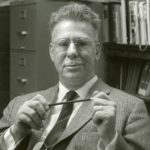
Professor Higginbotham, who began to be called Higgie by everyone but his students soon after he arrived on campus in 1923, helped Tandy and Smith set up the session in Higgie’s classroom in the old English building.
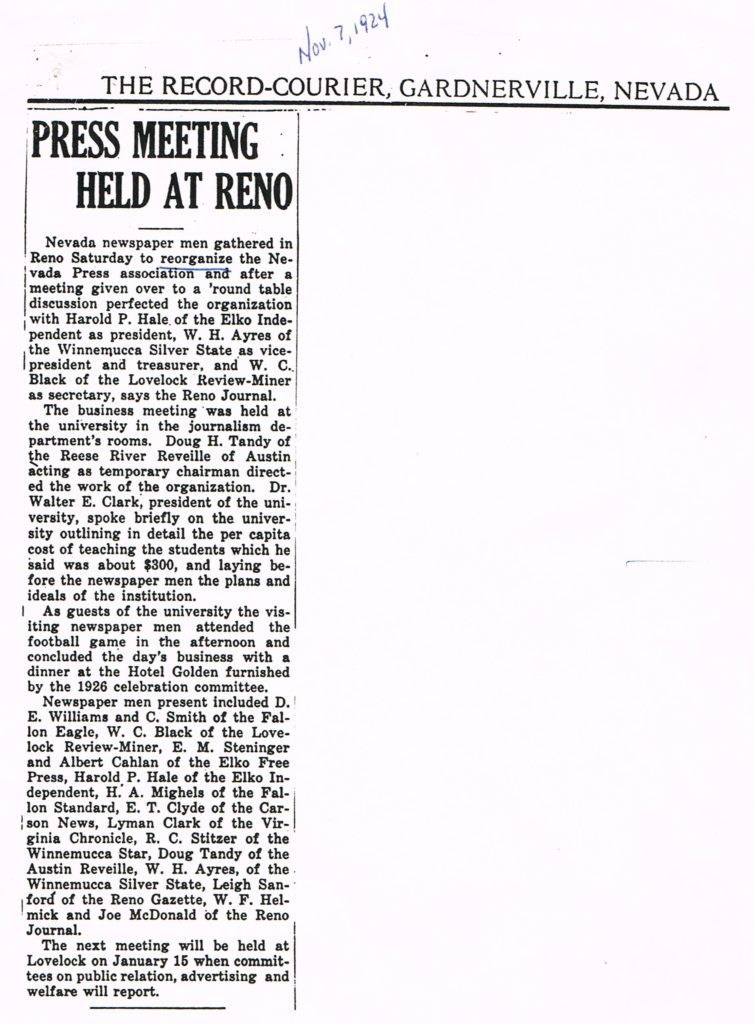
Fifteen newspapermen representing 12 newspapers in western and northern Nevada attended the meeting, Nov. 1, 1924, and established the Nevada State Press Association. Those attending emphasized that the new group bore no relation to previous organizations — the first one having been the Nevada Editorial Association formed in Reno Dec. 16, 1911. Hale, of the Elko Independent, was elected the first president. A $10 assessment was laid on each member to get the association rolling. Those who had attended the meeting in Fallon received a rebate of $2. Seven of the 15 members paid up on the spot.
The founding Nevada State Press Association was a lusty baby from its birth. Officers and members sought information nationwide and distributed that knowledge in the form of bulletins issued on an infrequest basis. Battles were fought before the Nevada Legislature over legal advertising rates, publication of county bills paid, publication of county ordinances and their frequency and content, delinquent tax lists and other pieces of legislation.
In those early days the terms “Free Press” and “Freedom of Information,” “The Public’s Right to Know” were alien to Nevada newspapermen. They knew that they could find out all about what went on in a closed meeting, if they cared to make the effort. They often did, and published their findings to the chagrin of legislators, county commissioners, city councils and town boards.
Difficulties faced in compiling a complete and accurate history of the NSPA is a lack of names of president and secretaries. As late as 1936-37, Warren L. Monroe of the Elko Independent served as secretary-treasurer having succeeded Dalbey in the post. Claude Smith had served in that position earlier, and Jack McCloskey of the Mineral County Independent-News and John Sanford of the Reno Evening Gazette were other secretary-treasurers. As for presidents, a fairly complete list goes back to 1940-41 when McCloskey was at the helm. Two presidents, Clyde Terrell (1950-51) and Allan Kennedy (1973-74) of Central Nevada Newspapers, died in office. The late Graham Dean of Reno Newspapers, Inc. was the only president known to have served twice, during the war years, his term having commenced in 1944. Monroe, Smith, Al Cahlan of the Las Vegas Review-Journal are other presidents whose dates of office aren’t available. The association has been served by three woman presidents, Carol Pringle of the Lovelock Review-Miner (1981-82), Ruthe Deskin of the Las Vegas Sun (1966-67), and Avery Stitser of the Humboldt Star (1955, 56).
The decision to establish a secretary-manager system was reached in 1943 and Higgie was the logical choice for the job. From then on, Higgie ran the show, and the presidents and directors were happy to allow him to do so. Higgie pursued the arduous task even though he took on added responsibilities on the campus with the creation of the Alfred Leslie Higginbotham Department of Journalism, separated from the English department.
There were advantages and disadvantages in this new procedure. Higgie provided member information they needed to keep their newspapers and shops afloat and inspired newspaper folk to ever bigger and better efforts. But at the time NSPA showed signs of deteriorating into a marching and chowder society in which members met once a year, slapped one another on the back, told stories, sipped drinks, and went home to forget about NSPA for another year. Fortunately the association managed to evade such indistinction.
Higgie continued in the secretary-manager post until 1965, when he became ill and was forced to retire from the university faculty and the NSPA post. Prof. Theodore Conover succeed Higginbotham as department chairman, and as NSPA secretary-manager. Conver adopted many of Higgie’s methods in handling the NSPA job, and started producing strong bulletins. He held the post until 1975, leaving the department chairmanship under newly adopted regents; rules that allow one person to hold a department chairmanship for no more than 10 years. Since Conover was to take a one-year sabbatical leave from the faculty he also gave up the NSPA job. Succeeding Conover with the NSPA was Joe Jackson, retired managing editor of the Reno Evening Gazette. After two years, Jackson gave up the post and it was assumed by Peter Kelley, Carson City advertising and legislative consultant and former newspaperman with the Carson Appeal. Kelley has held the post for the last eight years but has informed NSPA directors this term is his last.
Neither Higginbotham nor Conover were keen on lobbying for the press in the Legislature, but the lobbying was largely done by McCloskey, along with Walter Cox, the sage of Pizen Switch, and Bob Sanford. Cox and Sanford were co-owners of the Mason Valley News, “the only newspaper in the world that gives a damn about Yerington.”
Pushed by Jackson and Kelley, two significant pieces of legislation beneficial to newspapers and the public have been placed in Nevada Revised Statutes. Nevada’s Open Meeting Law, adopted in 1977 after one passed in 1960 was found unsuitable, is considered among the toughest in the nation. Closed door meetings are strictly prohibited. A bill is being considered by the current Legislature to put even stronger teeth in the law by clearing any action taken during a secret session to be null and void and the attorney general’s office is given direct authority to see that the law is obeyed. The 1977 law doesn’t apply to the Legislature, however, and the 1983 Legislature has passed a resolution which would change Nevada’s Constitution to eliminate the current right of the Senate to hold executive sessions. The resolution, which goes before the voters on the next election ballots, declare that “each house shall determine the rule of its proceedings except that the Legislature shall provide by law procedures for its select and standing committees. NSPA generally opposes that concept, pressing instead for a clear-cut declaration that neither of the houses of the Legislature, nor any of its committees, may hold star chamber sessions.
The other act mentioned in the foregoing is the Shield Law, which provides that no newspaperman or newspaperwoman shall ever be required to disclose the source of privileged information to any person, court, grand jury, or any other body at any time. The bill became law after Sen. Warren L. Monroe (D-Elko) made one of the shortest speeches on record in its behalf.
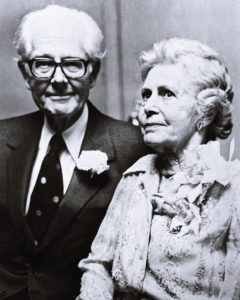
“We need this law,” Monroe declared, and it was adopted by an 18-2 vote.
Another piece of legislation which has floundered during the last three legislative sessions is an attempt to clarify the public records law by defining what a public record is. The newest bill died in committee. Still another measure which would allow governing bodies to confer privately with their attorneys, is in the mill.
Earlier on what legislative protection was needed had been provided by Nevada publishers who were members of the Legislature. They included Doug Tandy of the Reveille, Vail Pittman of the Ely Daily Times, Charles Russell of the Ely Record, Warren Monroe of the Elko Independent, Edwin C. Mulchy of the Sparks Tribune, Gene Evans of the Elko Daily Free Press, Denver Dickerson of the Carson Chronicle, N.H. Chapin of Ely Record, Al Cahlan of the Las Vegas Review-Journal, Carl Shelly of the Sparks Tribune, Claude Smith of the Fallon Standard, Ray Germain of the Tonopah Times-Bonanza, Walter Cox, Matt Farrell, Allan Dalbey of the Fallon Eagle.
When Jackson was named secretary-manager one of his duties was designated as lobbyist. Jackson had been a newspaper reporter for more than 40 years and abhorred lobbying, although he carried out his duties and once he even registered as a lobbyist. But when Jackson left the post and Kelley, a pro at lobbying, took over, NSPA directors decided to put the good ship NSPA on a new course.
Ordering a 180 degree turn to enter waters in which the ship had never sailed, determined that the course would provide the best of service to officers, crew and the public, the directors activated both a Freedom of Information committee and a Legislative Committee, hired Kelley as secretary-manager as a professional lobbyist, and changed the dues structure. No longer would the good ship NSPA wallow along like the USS Reluctant, fictional Navy supply ship of World War 11 vintage. The rivets would be kept tightened. The NSPA would not break in half and sink in the Sea of Despond with all hands lost.
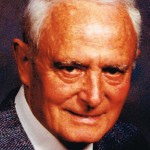
Kelley has kept the faith. In addition to his work in the NSPA office in Carson City and his lobbying, and handling the Better Newspapers Contest he has kept not only the officers and directors, but the entire membership abreast of legislative developments. Neither the Freedom of Information Committee nor the Legislative Committee has done its job too well. The information committee chairman has either appeared or sent a representative to Carson for most hearings on bills affecting his segment but the other committee members haven’t stirred a muscle. The Legislative Committee, which was suppose to take care of such mundane fiscal matters as legal ad rates and the like, has been completely ineffective, to the extent that legal rates haven’t been changed upward in 10 years while the expenses of running a newspaper have soared to the skies.
Those who care are now said to be thinking about making changes and this all might be discussed at the 1983 convention in Las Vegas.
Those committee members who have been deleterious of their duties might say: “What the hell, we’ve got a paid lobbyist to do that. Why should I go to Carson to argue.” But it isn’t that simple. Kelley is a persuasive lobbyist, but he cannot do the job alone. He must show that the NSPA supports him, and that means substantial testimony from the committee members, backed up by other publishers.
The practice of rewarding newspapers and staffs for excellence in journalistic endeavors was continued during the course change decreed in 1976. Years ago, the first prize offering was the Community Service awards, one for dailies, the other for weeklies. The nameplate of the winning newspaper was nailed to a plaque, and the winner got custody of the plaque until the next year rolled around. The last name on the plaque was allowed to keep it in perpetuity.
But that wasn’t enough. Under Conover a “Better Newspaper Contest” was developed, in which plaques were awarded for first place in what has come to be 27 categories. They include community service, editorials stories, sports, features, photography, typography, column writing, and advertising. For years a prize was offered for the best piece of work by a job shop, but it was won for so many years by Sherwin “Scoop” Garside of Bonanza Printers that he at last refused to accept any more awards and that category was dropped.
These contest have been spirited, and contrary to the opinion entertained by a couple of publishers who refuse to send in any entries because, they say, the newspaper shoots for a price in a certain category, the entries are the result of hard, sometimes brilliant work on the part of individuals who do not entertain any thought of an award when they start to write.
Another award, highly prized and having no affinity with the Better Newspaper Contest, is the Silver Makeup Rule award. Through this award, not lightly given, the association honors members for long and distinguished service to Nevada Journalism, and to the state of Nevada. An honoree may represent any department of a newspaper, and any member of the association may submit a nomination for the award.
Since its inception the award has been presented to only 25 Nevada newspapermen. They are: Claude Smith, Fallon Standard; Bert Selkirk, Gardnerville Record-Courier; Charles Triplett, Sr., Wells Progress; Albert Cahlan, Las Vegas Review-Journal; Chris Sheerin, Elko Daily Free Press; Walter Cox, Mason Valley News; John Sanford, Reno Evening Gazette; Joseph F. McDonald, Nevada State Journal; Paul K. Gardner, Lovelock Review-Miner; Joseph R. Jackson, Reno Evening Gazette; Paul A. Leonard, Nevada State Journal; Raymond Germain, Tonopah Times-Bonanza, Las Vegas Review-Journal and Las Vegas Sun; Frank Garside, Tonopah Times-Bonanza and Las Vegas Review-Journal; Jack McCloskey, Mineral County Independent-News; Earl Frantzen, Elko Daily Free Press; E.M. Steninger, Elko Daily Free Press; Thomas C. Wilson, Wilson Advertising Agency; Avery Stitser, Humboldt Daily Star; Jerry Roberts, Tonopah Times-Bonanza; Ty Cobb, Nevada State Journal, Sherwin Garside, Bonanza Printers; Robert Sanford, Mason Valley News; Sally Lyda, Gardnerville Record-Courier; William F. Wright, Las Vegas Review-Journal, and Mel Steninger, Elko Daily Free Press.
From a start of only 12 newspapers, membership in the association has increased to 29 newspaper members and 26 associate members as of March 31, 1983. There is one life membership.
Regular members in the association is limited to newspapers defined as legal publications by the statues of the State of Nevada, and to the printing business or job shop. Associate membership is open to owners, executives and authorized representatives of publications in the state other than those classified as legal newspapers, to Nevada newspaper executive personnel temporally not engaged in their profession or who are in retirement, printing and newspaper equipment and supply manufacturers, public relations and advertising agency and practitioners, and others whose interest and activities are allied with the general interest of the association.
Life memberships are limited to those individuals with 30 years or more invested in the Nevada newspaper profession and whose publications have been members of NSPA for 30 or more years.
The Reese River Reveille has the longest whiskers of any current Nevada paper, having seen the light of day in 1863. The Nevada Appeal first came out in 1865 followed by the Elko Independent in 1869, the Eureka Sentinel a year later, joined that same year by the Lincoln County Record and the Nevada State Journal. The Reno Evening Gazette was founded 1878, the Gardnerville Record-Courier in 1880, the Elko Daily Free Press in 1883 and the University of Nevada Sagebrush in 1893.
First published after the turn of the century, and still paying NSPA dues, are: Las Vegas Review-Journal, 1901, Tonopah Times-Bonanza, 1901; Lovelock Review-Miner, 1905; Mason Valley News, 1917; Ely Daily Times, 1920; Boulder City News, 1931; Wells Progress, 1936; Henderson Home News, 1948; Las Vegas Sun, 1950; University of Nevada Las Vegas Rebell Yell, 1955; Nevada Legal News, 1960; Native Nevadan, 1963; Pahrump Times Star, 1970; Lahontan Valley News, 1971; Humboldt Sun, 1972; Valley Herald and Lake Meade Monitor, 1975; Battle Mountain Bugle, 1976; and the Nevada Baptist, 1979.
Printer members are Bonanza Printers, Las Vegas; the Nevada State Printing Office in Carson City and Washoe Litho Print in Reno. California associate members are the Tahoe City Tribune, Tahoe City, Inyo Register, Bishop; Inyo Independent and Valley Progress Citizen, Lone Pine; Lassen Advocate in Susanville, San Rafael Independent Journal, Mono Herald and Bridgeport Chronicle, Feather River Bulletin in Quincy.
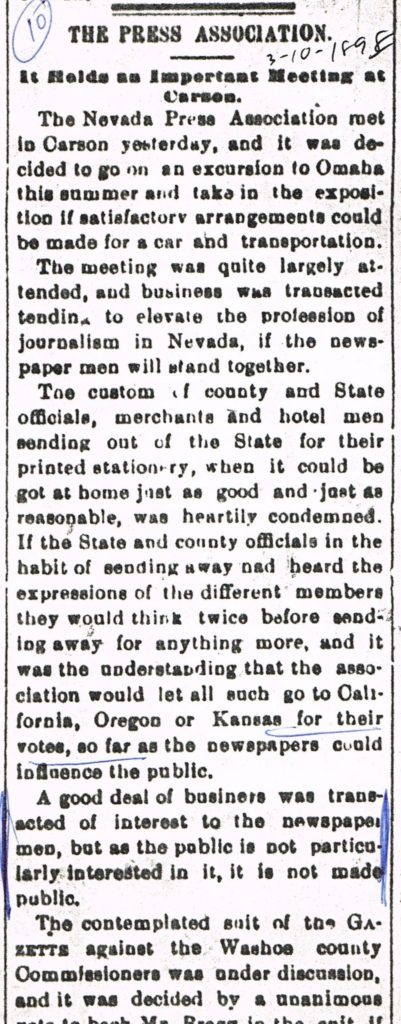
Nevada newspapers operate in a situation perhaps unique in the United States. Nevada’s sparse population and few community centers aren’t conducive to either a heavy volume of advertising or wide circulation. The state’s population of 800,897 as of April 1, 1980, is scattered over an area a bit in excess of 110,000 square miles. Of the 17 counties, only Clark in the south and Washoe in the north have achieve metropolitan area status. Clark’s population is 463,087 and Washoe’s is 193,623, accounting for area around two thirds of the state’s inhabitants.
Citywise, Las Vegas, the county seat, has Clark’s and the state’s heaviest population concentration at 164,674, followed by North Las Vegas, 42,739; Henderson, 24,363; Boulder City, 9,590 and Overton, 6,282. Four newspapers serve the metropolis, Las Vegas Review-Journal, the Las Vegas Sun, The Nevada Legal News and the Rebel Yell (the latter a weekly). The Henderson Home News, a semi-weekly, and Boulder City News and the Valley Herald and Lake Meade Monitor take care of the other three communities.
Washoe County contains two cities, Reno, population 100,756 has one daily newspaper now, the Reno Gazette Journal, the Gazette being published in the afternoon and the Journal in the morning. The Sagebrush is published semi-weekly and the Native Nevadan and the Nevada Baptist, are monthlies. Sparks, population 40,780, has one weekly newspaper, the Sparks Tribune. Newest members of NSPA is the North Lake Tahoe Bonanza of Incline Village. The Bonanza, a semi-weekly, started publication in 1979.
Scattered throughout the remaining 15 counties are 17 newspaper members of NSPA plus a handful of news owners. Carson City County, which was Ormsby County until the name was changed by the 1973 Legislature, has two papers, the Nevada Daily Appeal and the weekly Carson Chronicle. Carson City, once the nation’s smallest state capital city, now has a 32,022 population. Douglas County, with its population of 19,241 splits between the Lake Tahoe area and the Carson Valley, is served by the Gardnerville Record-Courier. Gardnerville, adjacent to Minden, the county seat, has a population of 13,000.
Elko County, one of the state’s largest areawide, boasts 17,269 souls with three population centers, Elko, the county seat, Wells and Carlin. Elko, population 8,758,has two newspapers, the Elko Daily Free Press and the Elko Independent, a weekly, plus Wells, population 1,218 with the weekly Wells Progress. The Free Press and the Independent serve Carlin’s 1,232 residents. Churchill County, population 13,917 is served by the Fallon Standard and the Lahontan Valley News, both tri-weeklies published in Fallon, county seat, population 4,262.
Lyon County (pop. 13,594) is served by the Mason Valley News, published in the county seat, Yerington (pop. 2,021). The Humboldt Sun, a bi-weekly, is published in Winnemucca (pop. 4,200 more or less). The Times-Bonanza is published by Central Nevada Newspapers, Inc. which puts out three other weeklies, the Reese River Reveille of Austin (pop. 540) in Lander County (pop. 4.076), Eureka Sentinel in Eureka (pop. 750) in Eureka County (pop. 1,179) and the Goldfield Sun in Goldfield, the county seat of Esmerald County with 1,198 breathing souls. The Pahrump Valley Times Star is published in Pahrump (pop. 4,000).
The Ely Daily Times, published in Ely with a population of 4,897. Ely is the White Pine County seat with 8,167, also serves McGill, Ruth, Reipetown, Kimberly, Lund, Duckwater, Currant and Preston. Mineral County, population 6,217 has two weeklies, the Mineral County Independent-News and the Hawthorne News and is published in the county seat, Hawthorne, population 6,750 or less. The Lincoln County Record, another weekly, is published in Caliente (pop. 1,000) serving also Pioche, the county seat, and Panaca. Pershing County (pop. 3,408) boosts the Lovelock Review-Miner published in the county seat, Lovelock, (pop. 1,695).
Higgie wrote:
“No state with which I am acquainted has a better average of excellence in its newspapers than Nevada. Individual papers in other states, of course, may be stronger than those in Nevada, but they are exceptional. Nevada, too, has its strong and weak papers.
“Reason for this high standard in the Silver State lies in several economic and social factors.
“1. The isolation of most Nevada towns in a state of great distances strengthens the position of the home newspaper.
“2. The intelligence of Nevada newspaper readers is considerably above the average of the country and is reflected in the state’s journals. Because traditionally Nevada is a precious metal mining state, it has drawn to itself since its beginnings restless, adventuresome people of high standards. The same characteristics of enterprise are found in Nevada editors.
“3. Because of the isolation of ranch, mine and small town, many Nevada citizens have to depend upon reading for their entertainment. So they are avid newspaper readers.
“How this is reflected is borne out in a comparison which came to my attention a few days ago. There came to my desk in the mail a daily newspaper from a city of about twenty thousand in the South. In its six pages, this paper, though it had a fair wire report, carried less than a column of local. The Nevada paper which arrived the same day, also of six pages, was balanced with wire copy and features, and carried many columns of local news. It is published in a town of about three thousand.”
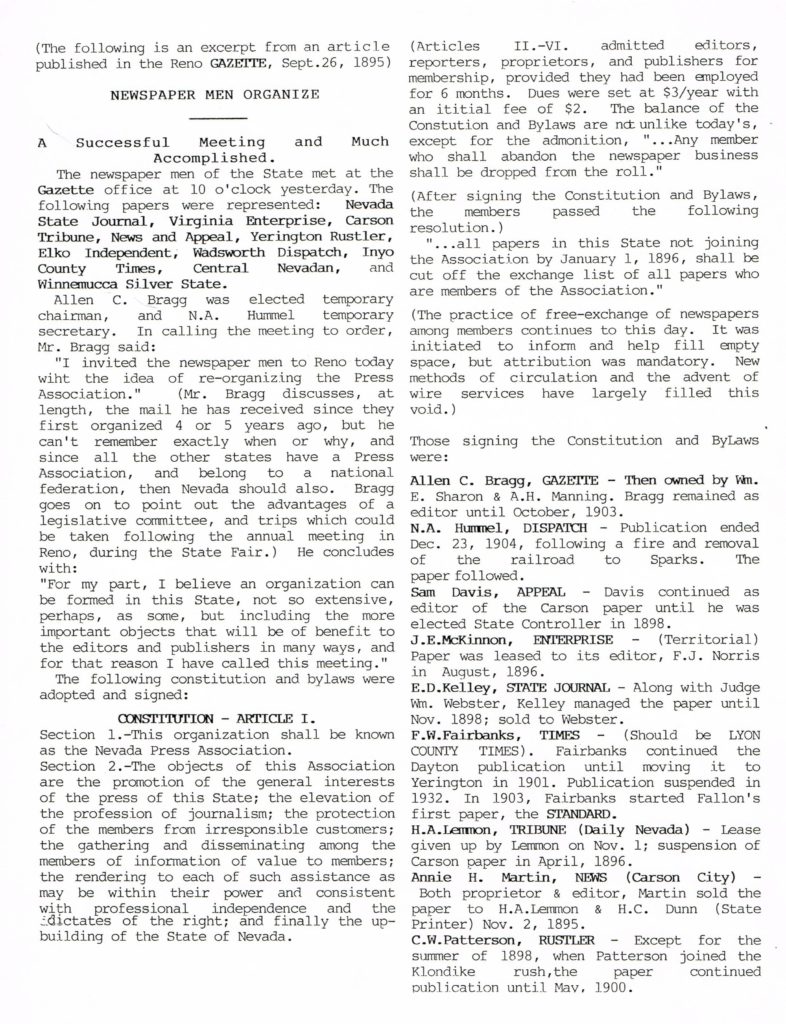
 Nevada Press Association The best in Nevada journalism since 1924
Nevada Press Association The best in Nevada journalism since 1924
